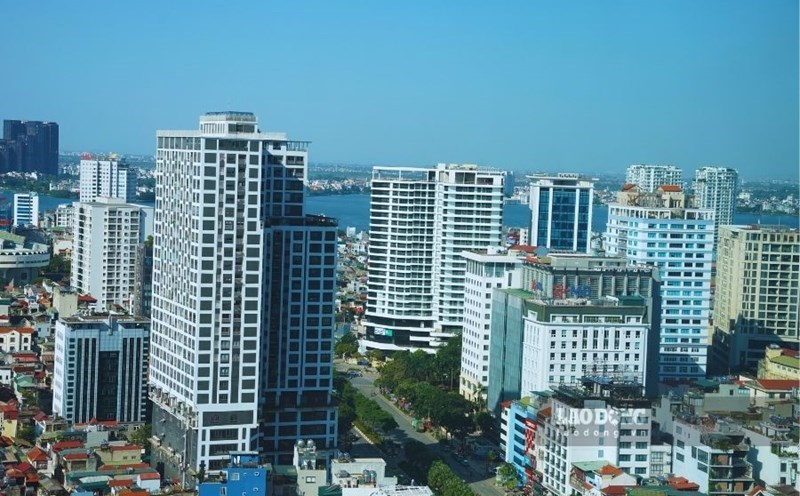The Overview Report of the Hanoi Secondary Apartment and Residential Market for the third quarter of 2025 by the One Mount Group shows that last quarter, the capital's real estate market recorded about 29,100 transactions, a slight increase of 1% compared to the previous quarter but a decrease of nearly 9% compared to the same period in 2024.
Among these, the apartment segment continues to affirm its leading position when reaching 20,800 transactions - the highest level in the past two years. On the contrary, the residential housing market fell sharply, with only about 6,100 transactions left, down 35% compared to the second quarter of 2025 and nearly 40% compared to the same period last year.
The clear difference between the two segments shows that the shift trend is taking place strongly in the behavior of home buyers in Hanoi.
If previously, land ownership was considered a form of sustainable asset accumulation, now, the new generation of buyers - especially the young customer group - prioritizes comfortable, synchronous and professionally managed living spaces. High-rise apartments have therefore become a popular choice, suitable for both modern lifestyle and financial convenience.

Although the selling price of primary and secondary apartments has increased by an average of 20% per year, the total price of a residential house is still more than twice the price of an apartment of the same area. In addition, flexible loan policies from investors and commercial banks help middle-income people more easily access the apartment segment.
These factors contribute to promoting liquidity for the high-rise market, while cash flow from individual investors and real buyers is gradually leaving residential land.
Another important driving force to help the Hanoi apartment market maintain heat is the accelerated infrastructure progress in 2025. In the third quarter alone, the city has started a series of key projects such as Tran Hung Dao Bridge, Thuong Cat Bridge, Co Linh underpass, metro lines 2 and 5, and many belt projects.
This development not only helps connect the center with the eastern and western regions, but also creates a big boost for the real estate market in these two regions - where a series of modern urban areas are concentrated.
In particular, the two projects Vinhomes Ocean Park in the East and Vinhomes Smart City in the West continue to have absolute dominance. In the third quarter alone, Vinhomes Ocean Park recorded about 3,200 secondary transactions, accounting for 80% of the total transaction volume in the East, while Smart City reached 1,500 transactions, equivalent to 30% of the West.
Sub-areas that are about to be handed over such as Metropolitan, Masteri Lakeside or Sola Park are considered the focus of attracting buyers, thanks to their fast completion progress and selling prices that are still significantly lower than the general level of the area.
In contrast to the excitement of the apartment segment, the residential housing market continues to face difficulties. The average price in the whole city increased by 28% compared to the same period last year, making the access of buyers to stay increasingly limited. Transactions decreased in all regions, especially in the East and West - which led the market in previous years. However, some wards such as Bo De, Long Bien, Yen Nghia or Ha Dong still maintain a relatively high transaction rate thanks to the advantage of infrastructure and prices being "softer" than the center.
Experts predict that in 2026, the Hanoi real estate market will recover slightly when GDP growth remains around 8-10% and interest rates continue to be low. Secondary apartment transactions may increase by about 4.5%, while residential land will increase by about 9% compared to 2025. However, selling prices are still high and speculation control policies may force investors to switch to other channels such as gold or stocks.
According to the One Mount Group Center for Market Research and Customer Insight, the 2025-2026 period will be a turning point for the Hanoi real estate market when the housing supply and demand structure is reshaped towards more professionalism. The apartment segment - with advantages in infrastructure, legal and finance is gradually replacing residential land to become a pillar of the market.











